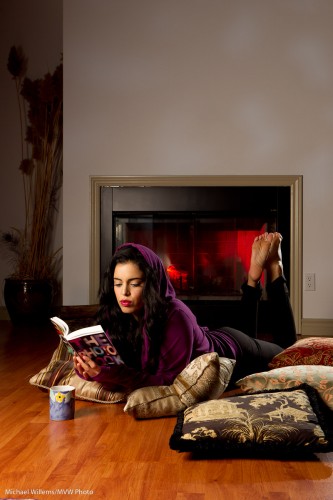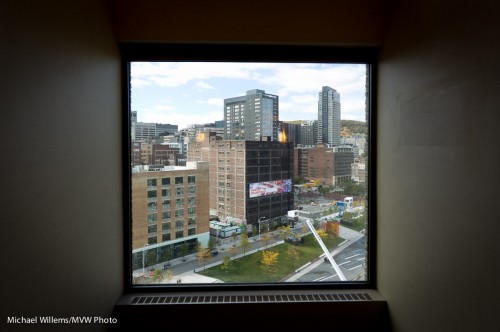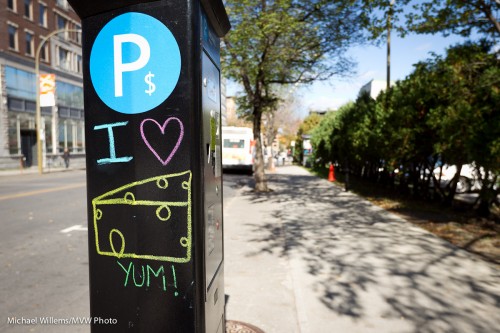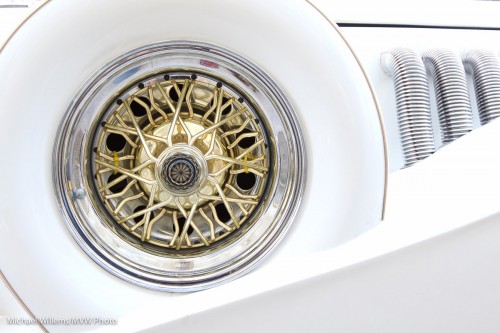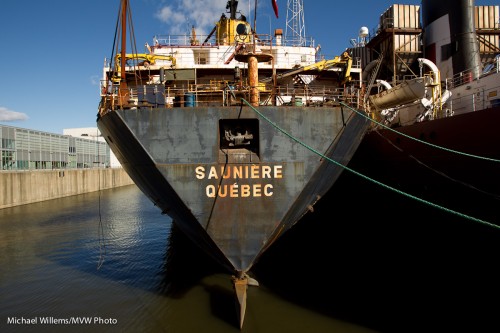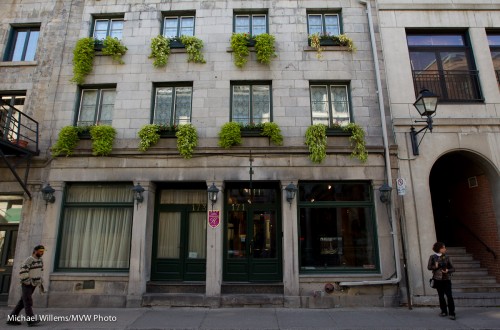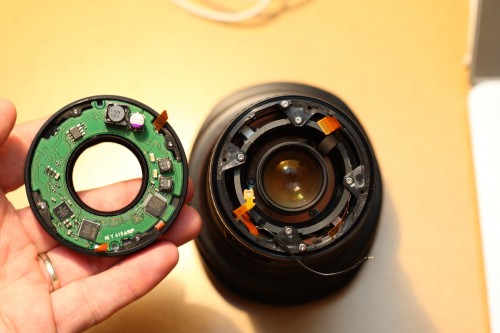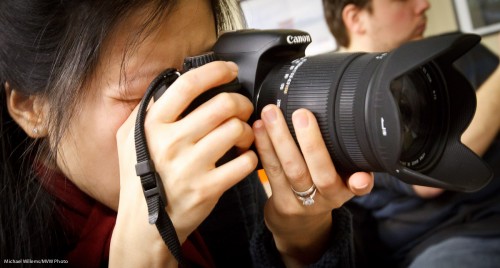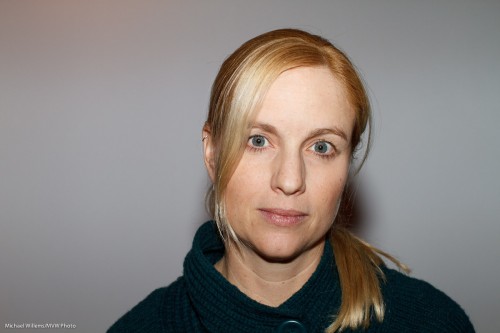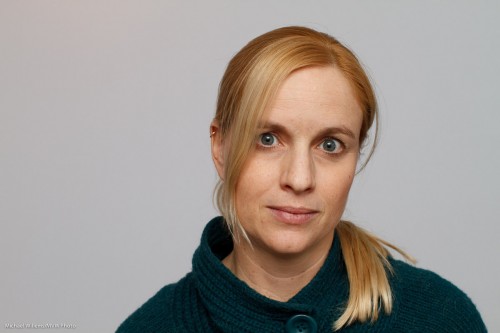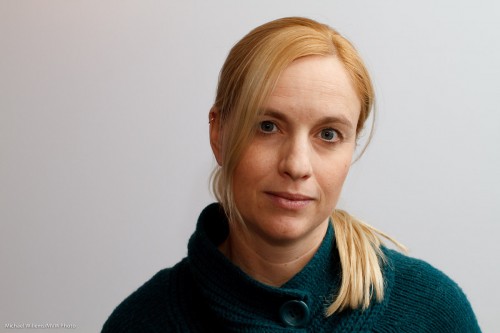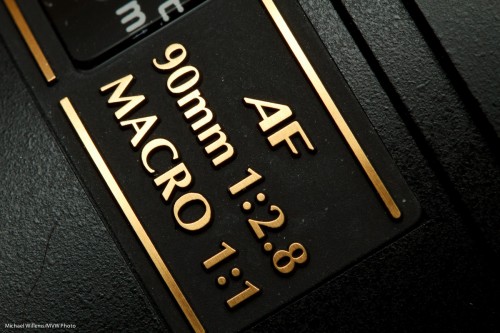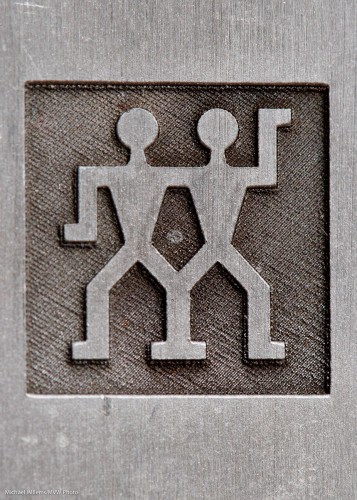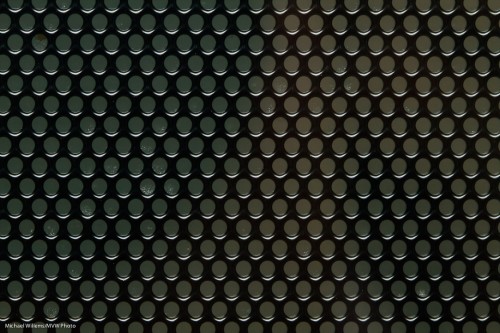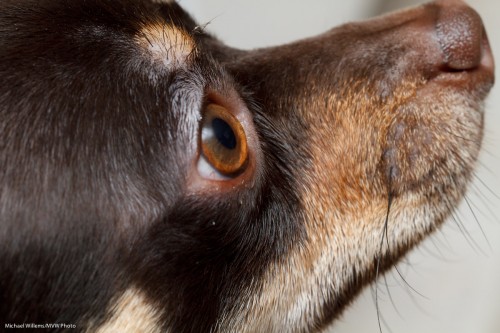A few days ago, reader David asked me this:
Just wanted to get your input on a upcoming event I will be shooting on Friday night. The events will be group shots (family and player) at a high school basketball game for their ‘Senior Night’. Since it will be in the gym with very high ceiling, bouncing off the ceiling does not seem to be a viable option. I was thinking about bouncing using a gobo card. Since the room will be filled with lovely (not) florescent light and wonderful (not x 2) swamp lights overhead, I could bounce the flash as a fill light to help get rid of the awesome green tones. The second option is to use an off camera 580EXII with a Honl Traveler 8 softbox (close to camera center maybe). The third option (since I believe in the power of 3) would be to use my Fong Reporter Whaletale with and on-camera flash. I am interested in “what would Michael do?” (As a a side note: I typically use a gray card to get a good white balance. I shoot everything in RAW, so flexibility in post-prod adjustment is not an issue.)
Good question, David.
For basketball I would say the following. First, here’s an example of a basketball pic I shot.
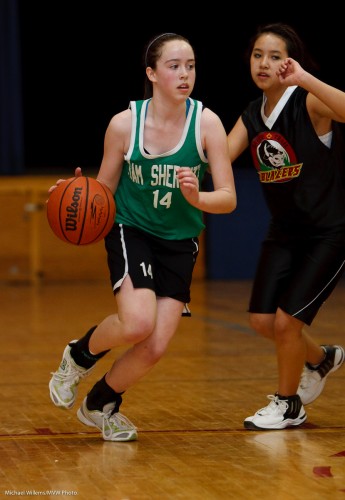
That was 1600 ISO, f/2.8, and 1/300th second.
And… oddly for the Speedlighter, I used flash, straight-on. As you correctly surmise, ceiling bounce or wall bounce can be difficult.
So this is one case where, if it is allowed (Ask the coaches! In high school basketball it will often be allowed) you can use straight-on flash to fill in the light. Of course this means recharge time between shots, but if allowed, you may want to do it. Also watch out, you could get red-eye – easy correction of course, but still, you have to do it.
Alternately, you can bounce of a larger bounce card. That will mean less power and more recharge time, but it can be viable.
Of course you can also choose to live with the light that is available.
You other options are good to try, too. Off-camera is not likely to be much help though since at the distance you are shooting at, it’s close to the camera even if held a few feet away. The softbox, ditto, and you lose light.
Also, the long lens is great but do not forget the wide lens for close shots. And:
- If you can, bring two cameras
- Ask the coaches if you can use flash
- Get close ups
- Shoot under the rim, but be careful behind it – balls will hit!
- Shoot vertical shots
- Get the back of shirts to get the numbers
- Shoot emotion: happy, sad, angry
- Shoot action: close up
- Shoot static for each player too
I hope that helps… and yes, I did answer this reader before that Friday!

